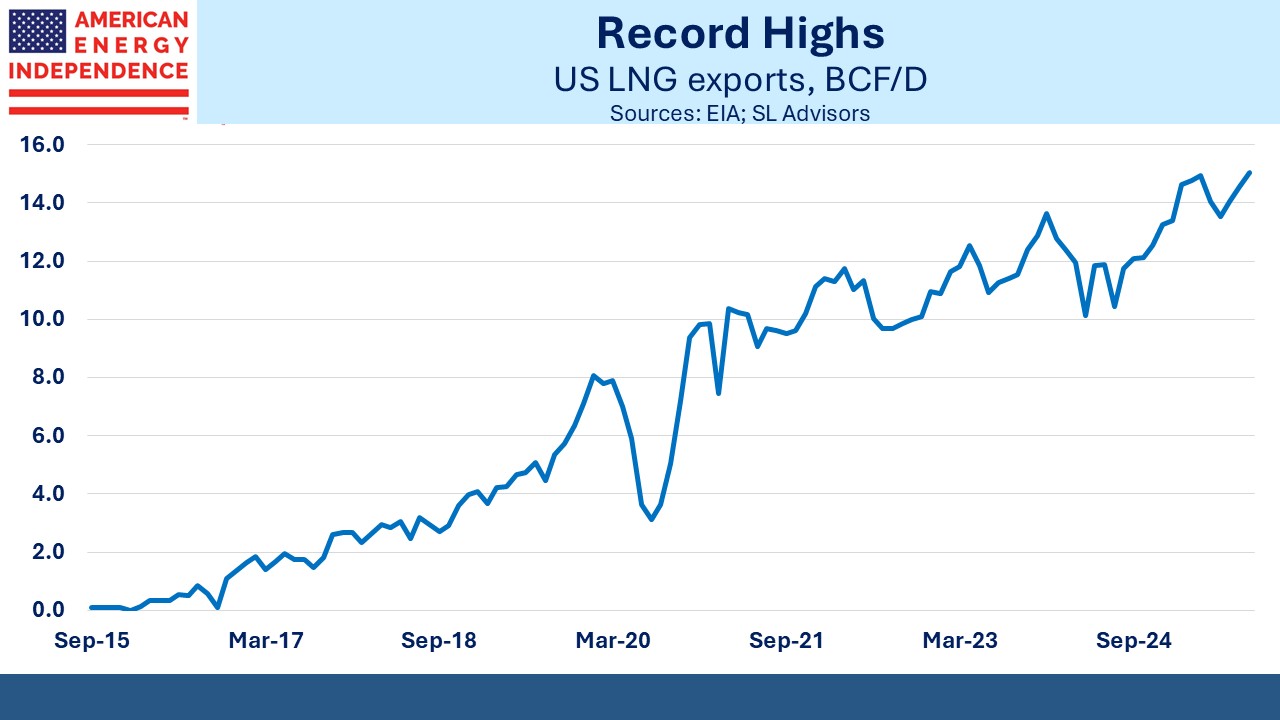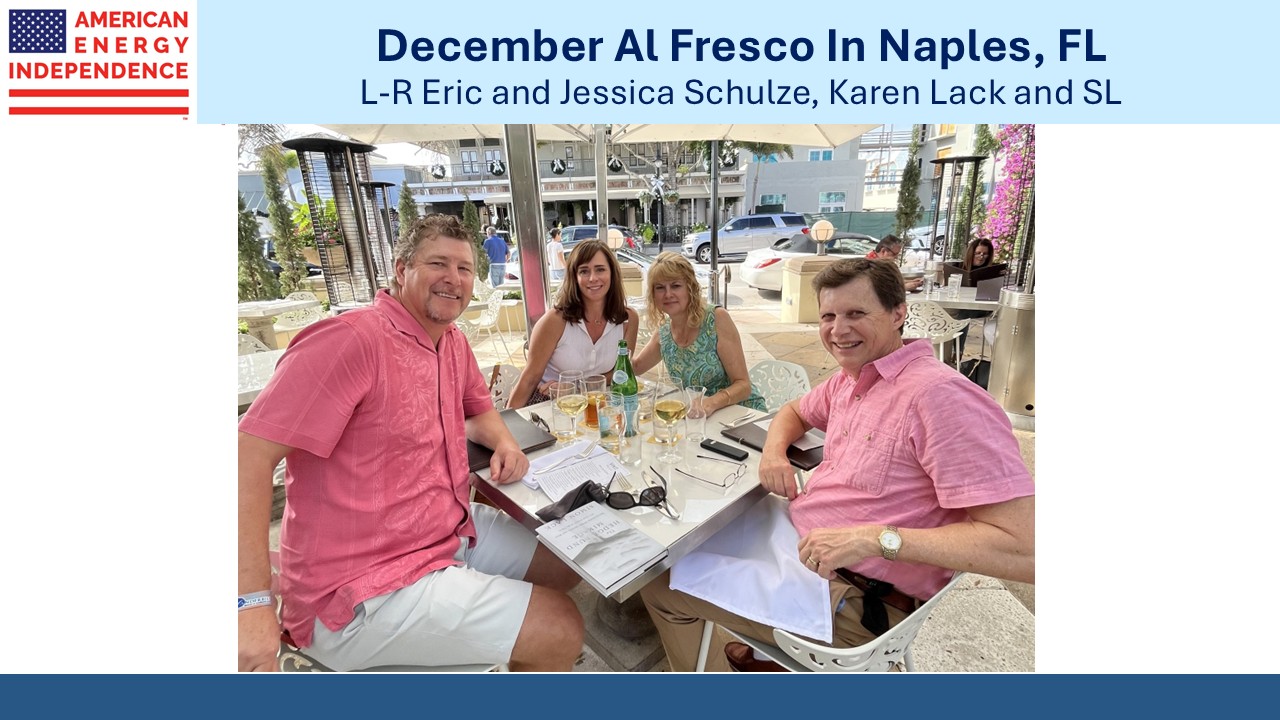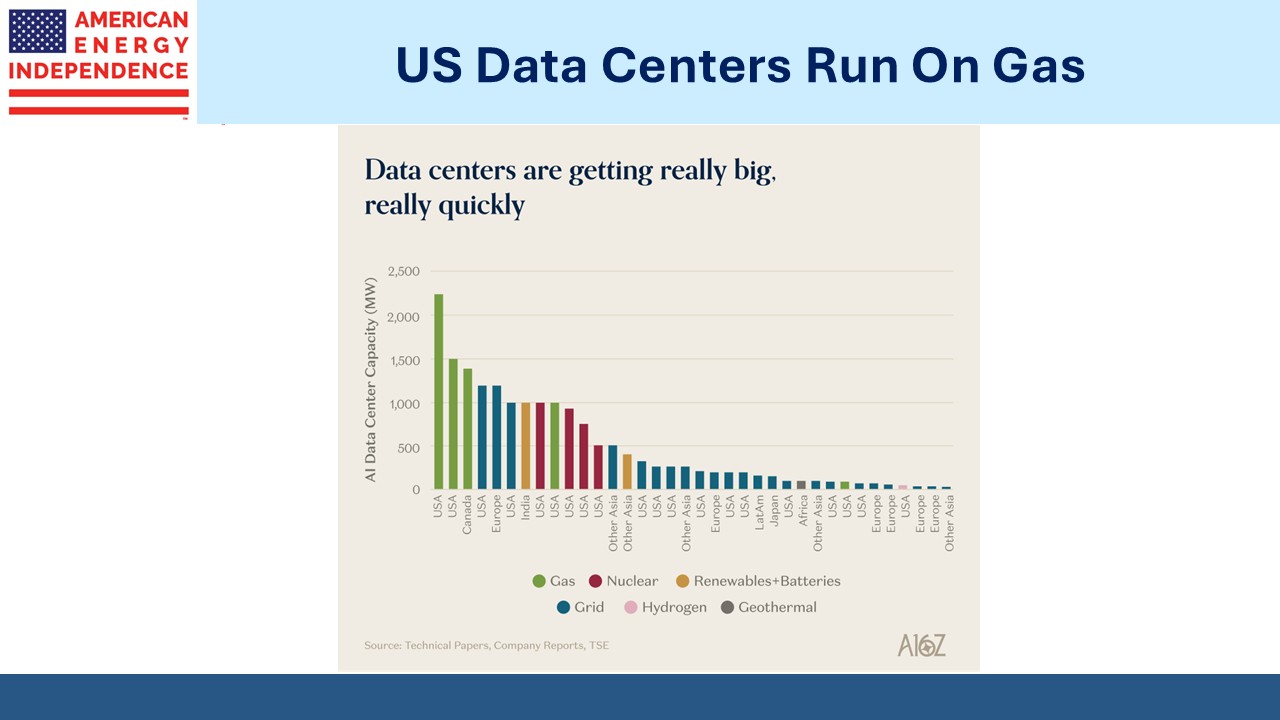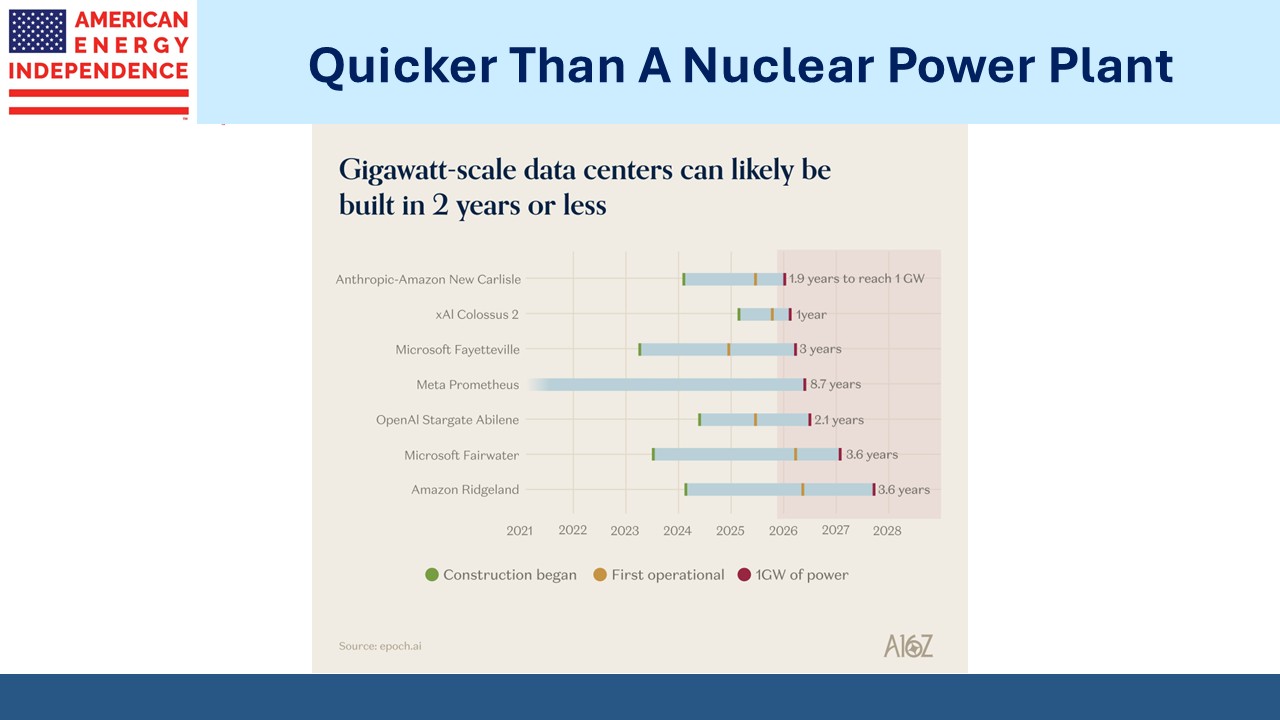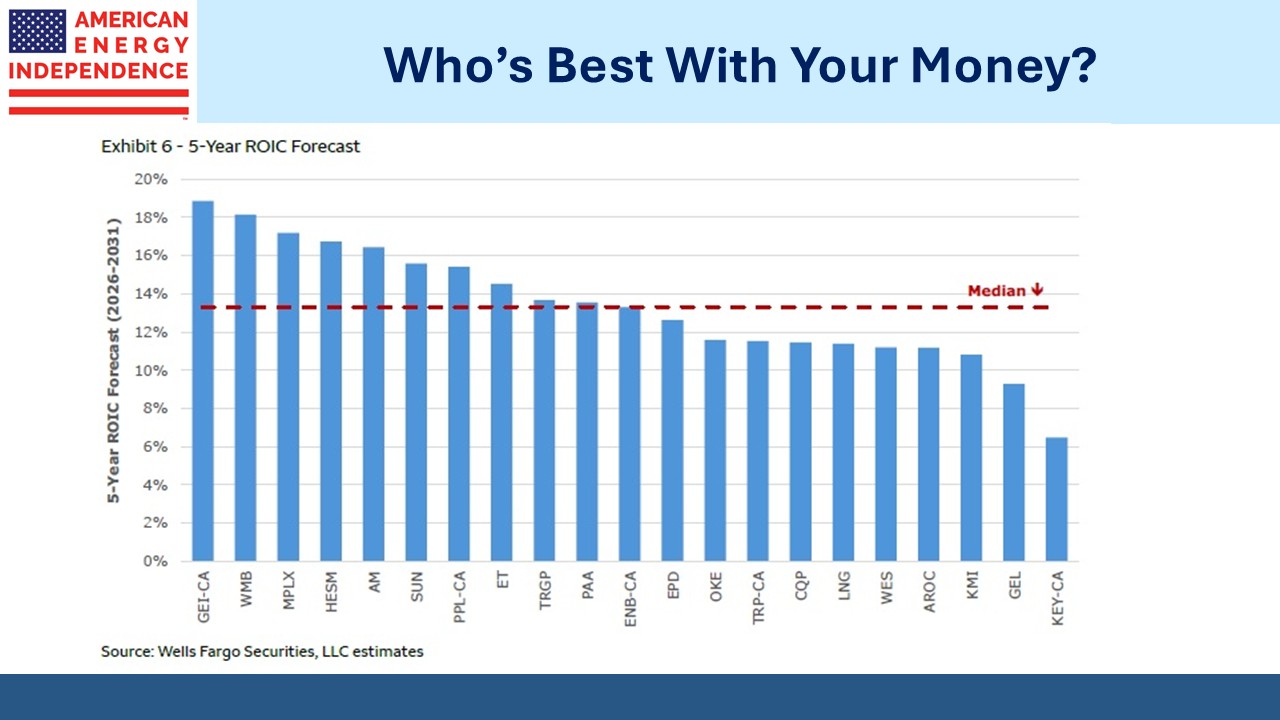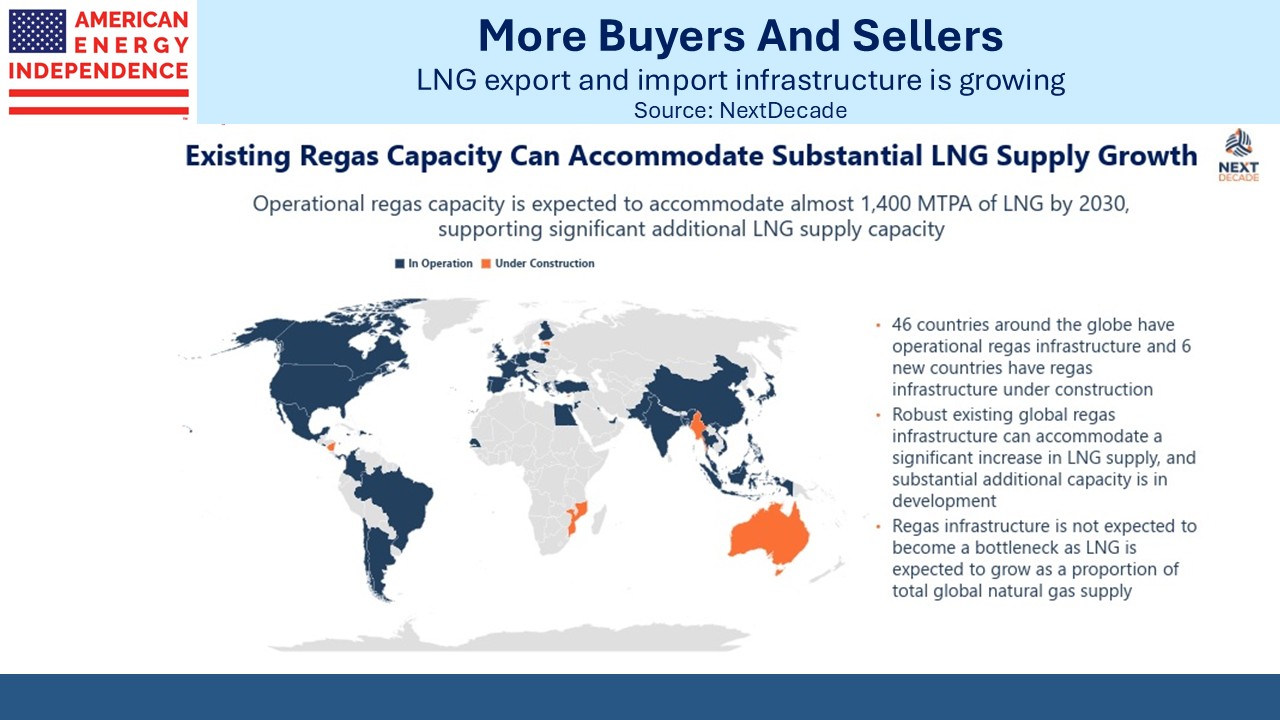English Christmas Dinner
Regular readers know that around this time of the year my thoughts briefly stray from midstream energy to Christmas. My love of Christmas pudding has been well documented here (see English Christmas Traditions, Merry Christmas and Happy Holidays! and watch The Joy of Christmas Pudding).
We all fondly remember the Christmas of our childhood. My boyhood Christmases in the UK always involved a Christmas dinner delayed from its scheduled mid-afternoon time while the men of the house struggled home from the pub far later than promised. With a 1960s segregation of duties, some marital discord usually followed concerning an over-cooked turkey.
I was too involved in whatever toys I’d been given to care, which I guess is how events can seem happier as time passes.
This is why the moment is about children, as we create memories in our offspring that rhyme with our own. Our grandchildren are numerous enough that they pretty much were the church Christmas pageant – naturally it was the best one we’ve ever seen.
My wife and I have passed through several phases of Christmas parenting. It started with putting out the cookies and sherry at bedtime (English Santa wants something stronger than milk). Hoping the little ones won’t wake up too early, and a few years later wondering if they’ll wake up before lunchtime. Nowadays vicariously, as our children report on just how early the grandchildren were up. Our Christmas morning was peaceful, as we prepared for another round of family togetherness.
The English Christmas meal involves some other traditions unfamiliar to Americans. Each place setting has a Christmas cracker which, when pulled with the person next to you explodes with a modest bang to present a silly paper hat, a cheap plastic toy and a lame joke such as, “How much did Santa’s sleigh cost? Nothing, it was on the house.”
Good enough for a grade school playground.
The BBC recently wrote that the jokes are tested before being used. This surprised me because after a lifetime of often truly awful Christmas cracker humor, I assumed there was no minimum standard.
You’ll find the participants at an English Christmas dinner table wearing silly paper hats demonstrating that sometimes we really shouldn’t be taken too seriously.
For years I have fended off competition for Christmas pudding, described lovingly in past blog posts noted above. My mother used to want a second helping, but she’s sadly no longer with us. I still have to share it with my wife, but since she cares enough to make sure we have some, it seems sensible not to complain.
I ensured my children didn’t like Christmas pudding. But last year in a sinister game they persuaded their own children to try it, expecting screwed up faces of disgust. Improbably, one granddaughter declared it very good, creating future unnecessary competition.
Boxing Day, December 26th, traces its roots to when the staff celebrated their Christmas (see Downton Abbey). Nowadays it’s a reprise of leftovers from the day before, and this year in the UK, Canada and other members of the British Commonwealth part of a four-day holiday. Inexplicably, the traditional extravaganza of Premier League matches was limited to just mis-firing Manchester United.
An additional reason to love Christmas is because it provides a colorful time of joy before the depressing winter that follows. January in London is akin to living in a damp, dark pit with grey skies delivering cold rain. Boxing Day has less than eight hours of daylight. January commuting is typically in darkness.
New Jersey is a little brighter but colder. You’d think such unpleasant winters would come with a compensating tax structure. Instead, liberal politicians add insult to injury by spending freely on big government and subsidized renewable energy even though they can’t fix the weather.
This is why within days of the conclusion of festivities we head south to Naples, Florida, where the climate and lifestyle are worth far more than they cost. Christmas has become the start of a wonderful sunny season. This prospect is so agreeable that I’m even moved to share my Christmas pudding.
We have two have funds that seek to profit from this environment:




